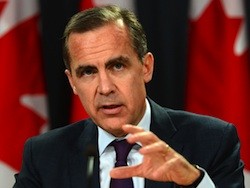
The Bank of England’s working group on changing from Libor to Sonia, a new risk-free reference rate, said priorities include finalising term rates for specific market segments end-users and ensuring critical infrastructure is in place as this year is critical for the transition.
The UK central bank, led by Mark Carney, published the minutes of the Working Group on Sterling Risk-Free Reference Rates from 7 February 2019 on its website this week. The working group consists of experts from large sterling swap dealers and discusses the development of sterling risk-free reference rates.
The minutes said: “The chair emphasised the importance of 2019 as a key year for meaningful transition from Libor to Sonia reference rates, and introduced a draft project plan for the Risk-Free Reference Rates Working Group to consider. The plan had a proposed set of priority task forces, proposals on governance, and a high level roadmap.”
After the financial crisis there were a series of scandals regarding banks manipulating their submissions for setting benchmarks across asset classes, which led to a lack of confidence and threatened participation in the related markets. As a result, regulators have increased their supervision of benchmarks and want to move to risk-free reference rates which are based on transactions, so they are harder to manipulate and more representative of the market. The UK has adopted the Sterling Overnight Index Average (Sonia) as its new risk-free reference rate to replace sterling Libor.
The Bank of England working group said much progress has been made on term Sonia reference rates but a priority is to finalise work to help determine their applicability for specific market segments and end-users. Another priority is to make sure critical infrastructure is in place to support the migration.
“Whilst some aspects of infrastructure are internal considerations for market participants, it is important that the working group now takes actions to provide appropriate clarity for external infrastructure providers, to aid them in defining and beginning critical build activity,” said the minutes. “This would establish a suitable position to support further migration into 2020.”
An infrastructure forum was held at the end of January and found that while some providers had already started their build, all wanted additional clarity in order to progress.
“Notably, they asked for clarity on conventions for Sonia and the overall transition timelines to identify the next steps,” the minutes added.
The working group chair, Barclays’ Tushar Morzaria, asked about lead times. Build times varied from six months to 18 months but frequency of software adoption varied considerably depending on the size and complexity of market participants. Infrastructure for the loan market, options and swaptions were areas of focussed discussion at the forum.
International approaches that that could be made to achieve global co-ordination for the transition were also discussed at the meeting.
“The working group agreed to focus on setting up the new groups first, and broker global co-ordination as a next step,” said the minutes, “The UK Financial Conduct Authority was supportive of the working group considering an international approach.”
The minutes noted that there was around £7bn of Sonia-linked floating rate note issuance in the second half of last year and this has already been overtaken this year with around £8bn. Progress has also been seen in Sonia-linked securitisation.
Euro risk-free rate
The European Union had selected the euro short-term rate (Ester) as the euro risk-free rate and replacement for EONIA, but this will now known as €STR. Market participants have expressed concerns on this transition as the European Central Bank has not published €STR, but this is due by October 2019 at the latest.
Chris Barnes at Clarus Financial Technology said on the derivatives analytics provider’s blog that the Working Group on Euro Risk-Free Rates has recommended a change to the current EONIA methodology to become the €STR plus a spread for a limited period, in accordance with Financial Stability Board recommendations and IOSCO Principles for Financial Benchmarks.
“This is ground-breaking news! I’m amazed it hasn’t received broader attention,” added Barnes. “Rather than EONIA ceasing to publish and falling back to another rate (e.g. €STR), EONIA will continue to be published, but at a fixed spread for a period of time.”
€STR – What You Need to Know https://t.co/BvmiIPzKxy pic.twitter.com/4RaCydQ335
— Clarus (@clarusft) March 26, 2019
Barnes wrote that €STR will first be published on 2 October 2019 and EONIA will then be published alongside as a fixed spread to €STR.
“This fixed spread will be calibrated over a 12 month look-back horizon, using a trimmed mean,” he said. “Using the most recent pre-€STR data available, EONIA will become a fixed spread of 8.67 basis points over €STR.”







